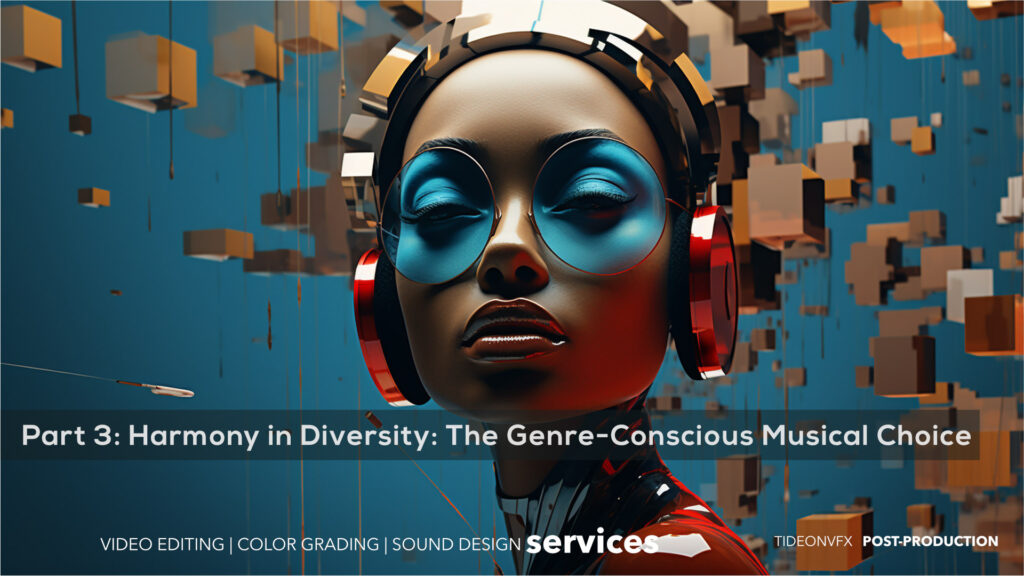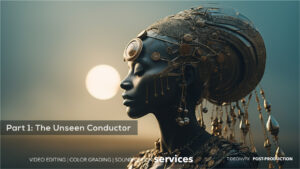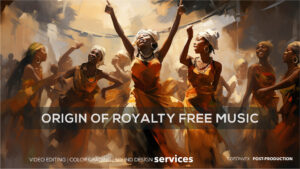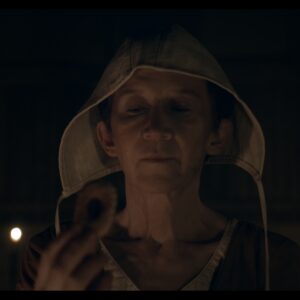Audio
Part 3: Harmony in Diversity: The Genre-Conscious Musical Choice
Part 3: Harmony in Diversity: The Genre-Conscious Musical Choice
In our journey through the world of film editing and its symbiotic relationship with music, we have explored the pivotal role of pacing and the emotional guidance provided by the right score. Now, we delve deeper into the realm of genre-conscious musical choices and their impact on the cinematic narrative. This instalment of our series sheds light on how selecting the right music is not only about tempo and pacing, but also about harmonizing the auditory and visual elements within the specific context of a film’s genre.
Understanding the Genre
The genre of a film acts as a guiding framework, shaping the audience’s expectations and emotional responses. It’s a lens through which the narrative is viewed and interpreted. Thus, when choosing music, an editor must be acutely aware of the genre’s conventions and how the music aligns with them. For instance, introducing a rock and roll texture in a Western film might significantly influence the perception of the film. It’s a creative decision that can either refreshingly redefine the genre or disrupt the viewer’s engagement.
This genre-conscious approach to music selection highlights the importance of consistency in storytelling. If a film begins with a certain musical style, straying too far from that established auditory theme can jolt the audience, leaving them momentarily disengaged as they reconcile this shift. It’s akin to a painter switching color palettes mid-canvas; while it can be striking, it requires skilful execution to maintain coherence.
The Art of Observation and Inspiration
One effective method for understanding the harmonious blend of music and genre is to study films that resonate with your project. Observing how successful films within your genre incorporate music can provide valuable insights. Pay attention to how these films use music to enhance their narrative, character development, and emotional depth. It’s not just about the choice of songs or compositions but also about their placement, duration, and dynamics in relation to the visual storytelling.
Creating Emotional Nuances
The emotional landscape of a film is often painted with the brushstrokes of its soundtrack. The right chord progression, instrumentation, or even a deliberate silence can evoke profound emotions. This is where the editor’s role transcends mere technical skill and enters the realm of artistry. The music chosen in the editing room becomes a language in itself, capable of expressing the subtleties and complexities of human emotions that visuals or dialogue might not fully capture.
A well-crafted soundtrack is more than an accompaniment; it is a crucial component of the storytelling process. It can underscore the inner turmoil of a character, amplify the tension of a conflict, or bring a sense of closure to a narrative arc. The synergy between the music and the visuals should be so intuitive and seamless that the audience feels the impact of one through the other.
In Conclusion
As we continue to explore the multifaceted role of film music in editing, it becomes evident that making the right musical choice is a delicate balance of art and technique. It requires an understanding of the film’s genre, a keen sense of emotional storytelling, and an appreciation for the subtle yet powerful ways music can enhance the cinematic experience. In the next part of our series, we will delve into specific examples and case studies, demonstrating how genre-conscious music choices have shaped some of the most memorable films in cinema history. Join us as we continue to unravel the nuances of this harmonious dance between sound and vision.










